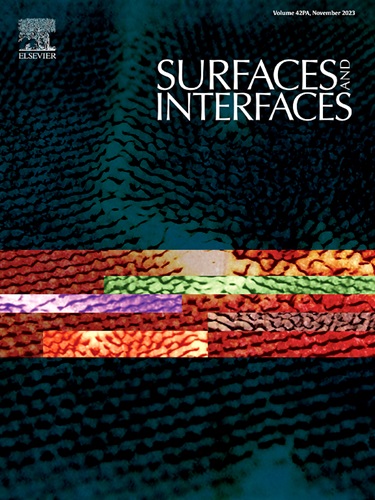Distinct effects of spark softening on micro-arc oxidized coating growth, wear resistance and corrosion resistance: A comparative study between Ti-Nb-Zr medium entropy alloy and Ti-6Al-4V as substrates
IF 5.7
2区 材料科学
Q2 CHEMISTRY, PHYSICAL
引用次数: 0
Abstract
The spark softening effect of cathodic current during micro-arc oxidation (MAO) has been recognized as an effective approach to modulate the microstructure and properties of Al-based MAO coatings instead of Ti-based MAO coatings, while its modulatory role on medium entropy alloys (MEAs) is still unknown. In this study, Ti-Nb-Zr (TNZ) MEA and Ti-6Al-4 V (Ti64) were subjected to MAO treatment under constant-current mode with an anodic current set as 0.4 A and cathodic current set as 0, 0.9 or 2 A. The results showed that the cathodic current modulated the microstructure and properties of MAO coatings in a substrate-dependent manner. For Ti64, the involvement of cathodic current resulted in decreased coating thickness, slightly promoted wear resistance and deteriorated corrosion resistance. However, the cathodic current increased the thickness, wear resistance and corrosion resistance of MAO coatings on TNZ MEA. In addition, both Ti64- and TNZ-based MAO coatings exhibited favorable cytocompatibility. The results presented in this work suggest that the involvement of cathodic current during MAO treatment is an effective approach for TNZ-based MAO coatings to achieve enhanced protective effects against wear and corrosion.

微弧氧化(MAO)过程中阴极电流的火花软化效应已被认为是调节铝基 MAO 涂层(而非钛基 MAO 涂层)微观结构和性能的有效方法,但其对中等熵合金(MEA)的调节作用仍是未知数。本研究对 Ti-Nb-Zr (TNZ) MEA 和 Ti-6Al-4 V (Ti64) 进行了恒流 MAO 处理,阳极电流设置为 0.4 A,阴极电流设置为 0、0.9 或 2 A。对 Ti64 而言,阴极电流的参与导致涂层厚度下降,耐磨性略有提高,耐腐蚀性恶化。然而,阴极电流增加了 TNZ MEA 上 MAO 涂层的厚度、耐磨性和耐腐蚀性。此外,Ti64 和 TNZ 基 MAO 涂层都表现出良好的细胞相容性。这项研究的结果表明,在 MAO 处理过程中引入阴极电流是 TNZ 基 MAO 涂层获得更强耐磨损和耐腐蚀保护效果的有效方法。
本文章由计算机程序翻译,如有差异,请以英文原文为准。
求助全文
约1分钟内获得全文
求助全文
来源期刊

Surfaces and Interfaces
Chemistry-General Chemistry
CiteScore
8.50
自引率
6.50%
发文量
753
审稿时长
35 days
期刊介绍:
The aim of the journal is to provide a respectful outlet for ''sound science'' papers in all research areas on surfaces and interfaces. We define sound science papers as papers that describe new and well-executed research, but that do not necessarily provide brand new insights or are merely a description of research results.
Surfaces and Interfaces publishes research papers in all fields of surface science which may not always find the right home on first submission to our Elsevier sister journals (Applied Surface, Surface and Coatings Technology, Thin Solid Films)
 求助内容:
求助内容: 应助结果提醒方式:
应助结果提醒方式:


